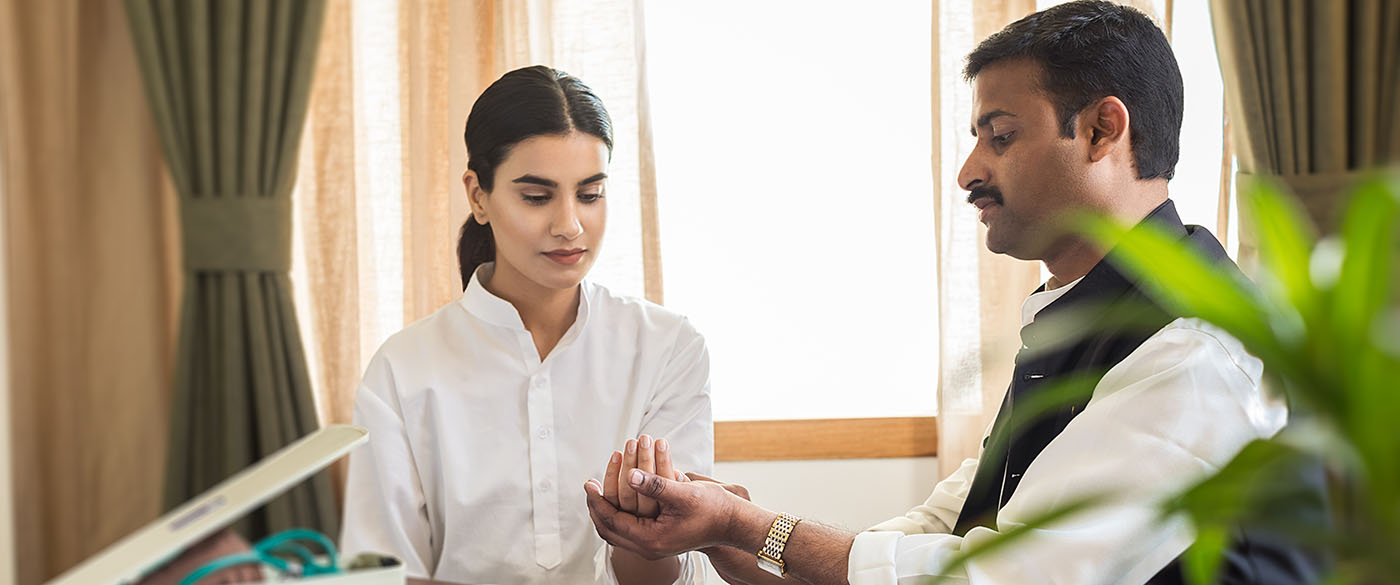You have probably heard of the term dosha being used and a lot us are even aware of what our individual dosha is.
But do we really understand what it means to be of a particular dosha? This concept of tridosha is the core philosophy of Ayurveda and a very vast and expansive subject. However, through this blog we have endeavoured to simplify it.
What do doshas do?
In layman terms, doshas are bioenergies which govern our emotional and physical wellbeing. Our normal bodily functions are maintained by them and any imbalance is directly responsible for diseases.
Doshas are classified into two types - Shareerika and Manasika. As their names suggest, they determine our physical and mental forms respectively.
Shareerika Dosha
Vata, Pitta and Kapha are the three doshas of the body. While these Tridoshas are present all over the body, their presence can be particularly seen in certain parts of it.
Let's divide the body into three parts; from our head to the chest is dominated by Kapha, between the chest and umbilicus is dominated by Pitta and the parts below the umbilicus are dominated by Vata.
Similarly, in a person's life during the day and night, the first part is dominated by Kapha, second part is dominated by Pitta and third part is dominated by Vata. While eating and during digestion, the first, second and third part are dominated by Kapha, Pitta and Vata respectively.
Manasika Dosha
Manasika gunas are Satva , Rajas and Tamas while Manasika Doshas are Rajas (quality of mind, that drives us to take actions) and Tamas (that leads to inaction and lethargy).
Functions of normal Doshas
Vata is responsible for all movements - movement of blood in blood vessels, movement of nutrients, movement of air in lungs, locomotion movements of hands and legs etc. In its normal state Vata causes enthusiasm, regulates respiration process, regulates all locomotor movements, regulates all activities of mind, speech, initiation of natural urges (tears, faeces, urination, sneezing, coughing, vomiting ,yawning), maintenance of the Dhatu's (tissues) in their normalcy and proper functioning of the sense organs.
In its normal state Pitta causes digestion and metabolism, maintenance of body temperature, vision, causes hunger, thirst, appetite, maintains the skin's complexion, intelligence, courage, valour, and suppleness of the body.
Kapha confers stability, lubrication and firmness of the joints. It is the cause for our capacity to withstand or withhold emotions, strains, stresses etc and is also cause for forgiveness.
Functions of increased doshas
Vata, when increased produces emaciation, black discoloration, desire for hot things, tremors, bloating, fullness, distention of the abdomen, constipation, loss of strength, loss of sleep, loss of sensory functions, irrelevant speech, delusion, dizziness, giddiness, timidity (peevishness).
Pitta when increased produces yellow discoloration of the faeces, urine, eyes, and skin; excess of hunger and thirst, feeling of burning sensation and very little sleep.
Kapha, when increased produces weak digestive activity, excess salivation, lassitude, laziness, feeling of heaviness, white discoloration, coldness, looseness of the body parts, dyspnoea, asthma, COPD, cough, cold and excess sleep.
Functions of decreased Doshas
Vata when decreased causes debility of the body, the person speaks very little, loss of sensation (awareness) and unconsciousness.
Pitta when decreased causes weakness of digestive activity, coldness and loss of lustre (complexion).
Kapha when decreased causes delusions, dizziness, tremors of the heart (palpitation), crepitus, increase of body heat, dryness and looseness of the joints.
While this is a very brief synopsis of how doshas impact our bodies and our lives, I hope it was able to give you a better perspective on them.
Feel free to reach out to me on ayurveda.consultant@naadwellness.com if I can help address any questions that you may have.
About the author: Dr. Hrishikesh is an MS in ShalyaTantra (Ayurvedic Surgery) from SSR Ayurveda Medical College & Hospital and is a graduate of JSS Ayurveda Medical College & Hospital. He also holds a post graduate diploma in Yoga from Annamalai University. A fifth generation Ayurvedic doctor, his family owns and runs an Ayurvedic Hospital in Kerala which specialises in creating their own in-house medicines. Dr. Hrishikesh brings with him a clinical experience of nearly ten years and specialises in Panchakarma and sports rehabilitation.


